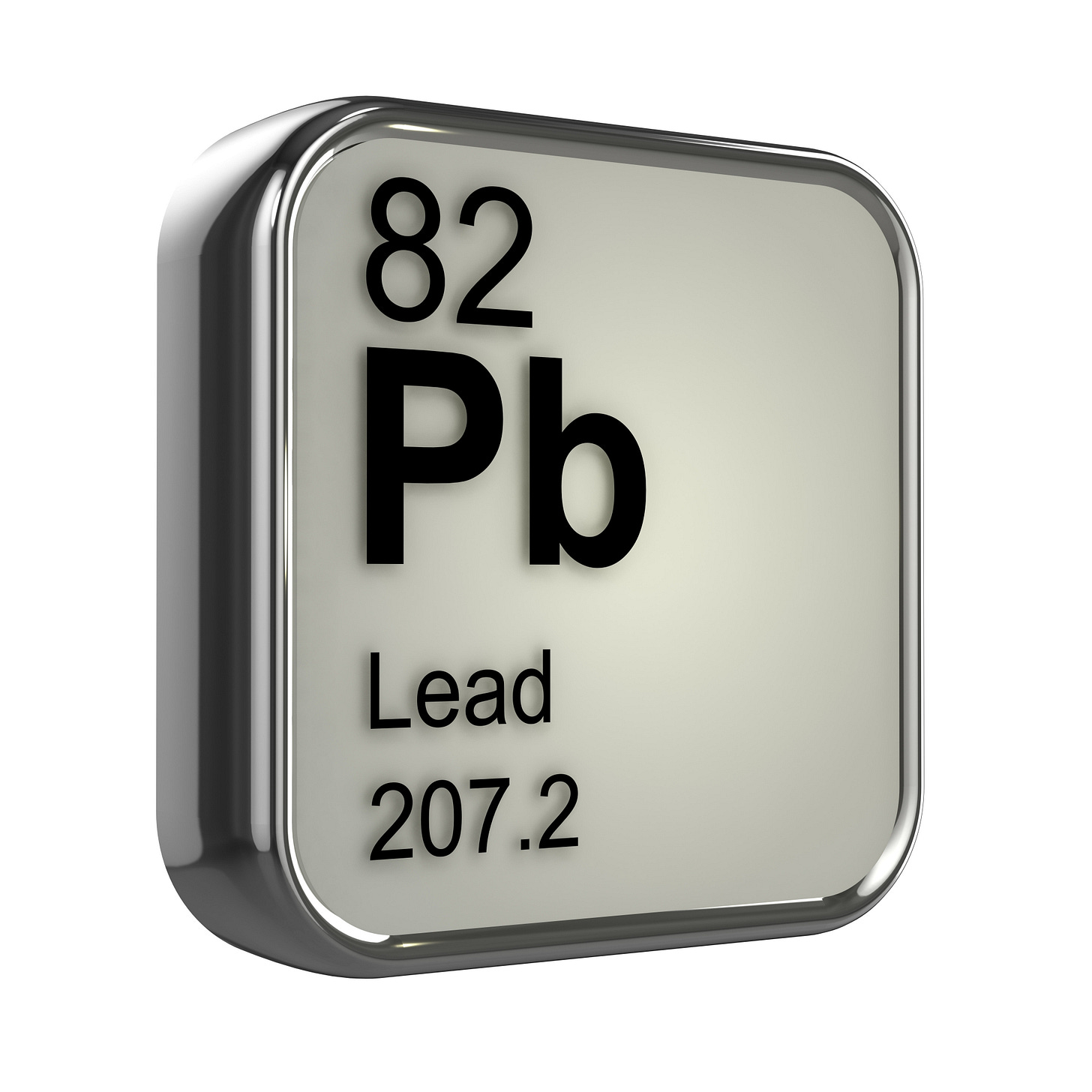Children, Horses and Camels don't like Plumbum (Pb)
The latin name for the toxic element Lead is Plumbum, abbreviated Pb. Getting informed about common Lead (Pb) exposures & Children's Health
When I left home at around 18years for age, my father, who was a second generation Master Painter from Germany, a real and significant trade and craft back then (1950’s) and now, and later a registered builder in Australia, imparted two prescient wisdoms to me : “don’t become a painter and you have a brain - use it!”
He grew up when Lead in paint (up to 50% by weight!!) was a common thing, so I suspect he intuitively suspected that wasn’t good and as such didn’t want that for me. Thanks Dad.
For most young males like myself, learning how to optimally use our brains can take a while. Fast forward to around 2001 with my father’s words still lingering in my mind, I went back to uni and studied Nutrition Medicine for four years after completing an honours degree in Biochemistry many, many years before.
With a fully functioning clinic setup and running by 2010, a few clients started presenting with unusual toxicological exposures and needed help and explanations. Not long after a woman with two young children came in with an hair analysis report she got from America that indicated extremely high levels of exposure to Antimony, a heavy metal with similarities to Arsenic. Her children who were both under five and had some serious health issues had significant signs of exposure to several heavy metals, especially Antimony.
We spent an hour and half together to establish the source of the exposure, the reason for the exposure and what to do about it. Details later in the article.
After this encounter and the fact that I had only limited training in toxicology, things changed. The clinic had been humming along for a few years with a strong focus on human health via standard medical tests and optimal nutrition, so I spent the next year studying and researching the effects of common environment exposures of toxic substances on humans and their impacts on short term and long term health.
This was in 2014. Of the many books and articles I read, a book entitled Poisoned Planet by Australia author Julian Cribb, left me slayed. It painted a no holds barred picture of the state of our exposure to multiple chemicals (>80,000) from man-made behaviours. I gave a copy to my children so that they could be informed.
That whole year of discovery and bad news left me down, shaken. However after sitting in an emotional wasteland for a month or so I got up and decided the way forward was to use my skills and learning to make a contribution and do something about it.
Raising awareness and education for the public was my mission. In a project that took many months, the website Toxno was created that housed profiles on over 25,000 commonly encountered chemicals in our environment AND relationally showed their common exposure routes. Then, after approaching the manager/CEO of an established NATA certified and renowned environmental laboratory in NSW, Australia, we decided to collaborate and TOXTEST was born in 2015.
After Toxtest had been up and running for a year, a client wanted her water tested. She had just had a new shed built that captured rain water that then supplied her camels with drinking water. The camels were kept to produce milk that she sold. However, the camels stated to get very sick not long after the shed was built and water was collected.
The water was found to have significant levels of Lead (Pb) after analysis at our Lab. The camels owner, obviously distressed, wanted to know why. Turns out that although Lead is no longer allowed to be used in metal plumbing when drinking water is involved, the builder’s of the shed used flashing (a metal strip next to the guttering that collected the rain water) that indeed contained lead. She stopped giving the camels that water and they slowly recovered.
It turns out that camels and indeed horses are very very sensitive to Lead exposure.
It has long been recognised by veterinary toxicologists that equids (horses, donkeys) and camelids (camels, llamas, alpacas) can show particularly severe clinical signs when exposed to lead (Pb), sometimes at lower doses than would cause equivalent toxicity in other species (e.g., cattle, dogs). While the precise reasons for their heightened sensitivity are still being investigated, a few well-recognised factors help explain why horses and camels are relatively more vulnerable to lead’s harmful effects.

For those interested, here are some key points that contribute to Camels and Horses increased susceptibility to Lead (Pb):
Gastrointestinal Physiology and Lead Absorption
Monogastric vs. Ruminant Digestion
Ruminants (e.g., cattle, sheep, goats) have a complex, multi-compartment stomach (rumen, reticulum, omasum, abomasum). In the rumen, certain minerals (including lead) can be bound or precipitated in forms that are less absorbable. Horses, although often grouped as “herbivores,” are hindgut fermenters, not true ruminants, so they lack that large fore-stomach environment in which Lead can be rendered less bioavailable.Camelids’ “Pseudoruminant” Digestion
Camels and other camelids have a three-compartment forestomach rather than the four compartments of true ruminants. Their digestive physiology is somewhat intermediate—while they do ferment plant material, it appears that lead is not precipitated or “detoxified” as effectively in camelids as in true ruminants. This can allow higher levels of soluble lead to pass through the GI tract and be absorbed into circulation.Net Effect
Because horses and camelids do not have as robust a capacity to reduce or bind lead in the GI tract, the fraction of ingested lead that actually gets absorbed can be greater than in true ruminants.
Red Blood Cell (RBC) Vulnerabilities
Lead Interference in Heme Synthesis
Lead disrupts several enzymes in the heme synthesis pathway (e.g., δ-aminolevulinic acid dehydratase). This interference can lead to anemia, fragile red blood cells, and hemolysis. While this pathway is common across mammals, horses and camelids often exhibit more pronounced signs of hemolytic damage (such as marked weakness, poor oxygen delivery) at relatively lower blood-lead levels. This is true for humans and especially young children, as we will see later.RBC Shape and Membrane Properties
- Horses have RBCs that can be relatively fragile when exposed to toxins that disrupt membrane function.
- Camels possess elliptical (oval) RBCs with unique deformability properties that help them cope with dehydration. Ironically, these same properties can render camel RBCs susceptible to oxidative and membrane stress induced by heavy metals (including lead).
In essence, even small perturbations in RBC enzyme activity or membrane integrity caused by lead can have an outsized effect on oxygen-carrying capacity and cell lifespan in these species.Long RBC Lifespan
Horses, in particular, have a relatively long RBC lifespan (often cited around 140–150 days). If lead is causing ongoing, low-grade damage to RBCs, the impact becomes cumulative over that extended lifespan—leading to a more pronounced effect on overall red cell population.
Limited Mechanisms of Detoxification and Excretion
Hepatic and Renal Excretion
After lead is absorbed, much of it is eventually excreted via the bile and kidneys. Species differences in liver enzyme systems, bile production, and renal tubular handling can influence how quickly lead is eliminated. Horses, for instance, are known to sometimes have slower or less efficient excretion pathways for certain metals and drugs than other livestock.Bone and Tissue Storage
Lead accumulates in bone over time. In most mammalian species, bone sequestration can be relatively protective in the short term. However, any factor that leads to mobilization of bone stores (e.g., stress, changes in mineral balance) can increase blood levels and potentiate toxicity. In horses and camelids, there is evidence that fluctuations in dietary mineral intake or physiologic stress may more readily mobilise stored lead.
Lead and Heavy Metal exposure in young children - not good.

So where did the Antimony (including other heavy metals like Lead) come from in the client with two young children as mentioned earlier.
By the way, metal "heaviness" and toxicity are often inter-related. Heavy metals & metalloids like arsenic, mercury, cadmium, and lead are able to induce toxicity even at low levels of exposure, accentuated by the fact that heavy metals persist in all parts of the environment - Water, Soil and indeed, Human Bone. Heavy Metal is a metal or element of relatively high density, or of high relative atomic weight.
Turns out her husband had worked in an old gold mine, recently converted to an Antimony mine (Gold, Antimony and Arsenic often coexist in the same geographical and geological area) for nearly 9 years and the health & safety procedures at the mine were questionable at best. He didn't work down in the mine per se, only the offices that accumulated lots of dust. He didn’t change his shoes when arriving home after work, in most part as a result of the lax attitude for health & safety at the mine. The children were both under five years and as such had frequent hand to mouth activities while playing on the floor. Most of the house had carpet. One didn’t then need to be a Sherlock to put it together. Almost immediately after this the family stopped the exposure.
There are many sources of Lead exposure, some that may be relevant to you. Check out our two extensively researched articles on Toxno - Sources of Lead (Pb) Exposure and Lead Exposure from Shooting Ranges that highlight these potential exposures. These were published after seeing more clients exposed after careful testing of themselves and/or their environment through our Lab.
Articles on other unwanted yet common exposures will be published here. A little knowledge goes a long way.
We will finish with some learning about how young children can’t tolerate exposure to Plumbum (Pb).
Children are universally recognised to be more vulnerable to Lead (Pb) toxicity than adults. Several biological and behavioural factors account for this increased sensitivity, many of which converge to make lead more readily absorbed, distributed, and harmful to a developing child. Below are the primary reasons why children are especially susceptible:
Higher Gastrointestinal (GI) Absorption
Increased Uptake
Children absorb a significantly larger fraction of dietary (or environmental) lead through the GI tract—estimates suggest children can absorb up to 50% of ingested lead, compared to around 10%–15% in adults.Nutritional Deficiencies
Young children often have diets that may be lower in iron or calcium. Deficiencies in these minerals can further enhance lead absorption because the body may “mistake” lead for essential minerals (e.g., calcium) at the absorption sites in the gut.
Developing Nervous System
Rapid Brain Growth
In early childhood, the brain is undergoing crucial periods of growth, synapse formation, and myelination. Lead can interfere with these processes, causing more permanent neurodevelopmental deficits.Less Effective Blood-Brain Barrier
While infants do have a blood-brain barrier, it is not as fully matured as in adults. This can allow higher concentrations of lead to cross into the brain tissue, where it disrupts neurotransmitter release, synapse formation, and overall brain function.
Greater Exposure Behaviours
Hand-to-Mouth Activity
Young children frequently explore their environment orally: they put fingers, toys, and other objects into their mouths. If these objects or surfaces are contaminated (e.g., with lead-based paint dust), the child can ingest more lead.Closer Contact with Floor and Dust
Children spend more time on floors, carpets, or outdoor play areas, which can be contaminated with lead-containing dust or soil. Consequently, they have more repeated exposures to small amounts of lead that accumulate over time.
Smaller Body Mass, Greater Dose per Unit Weight
Dose-Response Factor
Because children are smaller, a given amount of ingested or inhaled lead corresponds to a higher dose per unit body weight compared to adults. This means the same environmental lead level can produce a much higher effective exposure in a child.Less Physiological Reserve
Young children do not have as much “reserve capacity” to handle toxic insults. Even moderate disruptions in red blood cell function or enzyme systems can have more severe consequences for their overall health.
Ongoing Bone Growth and Storage
Incorporation into Growing Bones
Children’s bones are actively growing and remodeling. Lead competes with calcium and becomes incorporated into bone. This can both mask acute toxicity (when it’s stored) and later become a chronic source of lead release into the bloodstream during growth spurts or bone turnover.Higher Risk of Long-Term Effects
If lead is mobilised from bone during future physiological changes (e.g., adolescence, pregnancy), it can continue to exert harmful effects over a longer period—compounding the impacts of early-life exposure.
Long-Term Neurocognitive Impact
Critical Windows of Development
Damage from lead during critical windows of brain development can result in persistent and potentially irreversible cognitive, behavioural, and motor deficits—such as lower IQ, attention disorders, and learning disabilities.Sensitive Neuroendocrine and Immune Systems
Children’s rapidly maturing endocrine and immune systems can also be disrupted by lead exposure, leading to broader impacts on growth and disease susceptibility.






